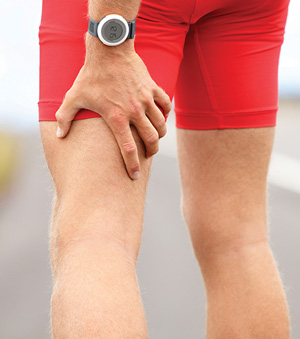 By Chris Klingenberg
By Chris Klingenberg
Research epublished in September by the Journal of Sport Rehabilitation supports the use of eccentric strengthening at long muscle lengths for preventing recurrent hamstring injuries.
The study, conducted at the Nicholas Institute of Sports Medicine & Athletic Training (NISMAT) in New York City, also underscores the importance of completing all phases of the hamstring rehabilitation protocol for preventing reinjury.
“Some athletes want to return to play before completing the proper rehabilitation,” said Tim Tyler, MS, PT, ATC, a clinical research associate at NISMAT and lead author of the study. “External pressure from owners and coaches pushes some players back into competition against our wishes. We tell our athletes to do it right the first time or take a serious chance at having to start over with a worse injury and missing even more competition.”
The study group comprised 50 athletes (20 women) diagnosed with a unilateral hamstring strain that occurred during sports performance or recreational exercise. All athletes followed the same three-phase rehabilitation protocol; an individual could not move on to the next phase without being pain free in the previous phase.
The goal of phase one was to protect the healing tissue, prevent motion loss, and minimize atrophy and strength loss. Phase two was designed to restore pain-free maximal hamstring contractions throughout the range of motion and improve neuromuscular control of the trunk and pelvis. Increasing hamstring strength at long muscle lengths was the goal of phase three.
On average, athletes required 11 weeks and 17 sessions to complete the three phases. Eight athletes did not complete the rehab protocol, returning to sports after the same number of weeks, but after just 11 sessions, on average. At follow-up, an average of two years after the initial injury, four reinjuries had occurred, all in noncompliant athletes.
“We are trying to get away from time and base our decisions on clinical milestones instead,” Tyler said. “Anecdotally, to get the athlete pain-free in stage three took the longest. Compliant athletes average more treatments than noncompliant athletes–the difference was not statistically significant, but that could be because the number of noncompliant athletes was so small.”
James Smuda, ATC, LAT, an athletic trainer in the UC San Diego Health System, weighed in on steps clinicians can take to increase compliance in athletes rehabbing from hamstring injuries.
“From a clinical perspective, it’s very important to first educate the patient on their injury—help them understand the etiology of their injury,” Smuda said. “Once they understand what exactly is going on with their hamstring, I like to explain the findings from my evaluation, from both an injury perspective and a biomechanical perspective. Next, we go over the steps needed to return to play and what to expect. From there we establish both-short and long-term goals based on their individual injury and make a ‘soft’ projection of when they will return to full activity.”
Kevin Cross, PhD, PT, ATC, a physical therapist, athletic trainer, and research coordinator at the University of Virginia-Healthsouth Rehabilitation Hospital in Charlottesville, agreed that developing a good rapport with the patient and providing education and feedback about expectations and goals are
important.
“The patient needs to understand the healing process of the injured tissue with timelines for introducing stresses to maximize the tissue health,” Cross said. “This education may reduce the patient’s frustration with the ‘slow’ progress, and it will justify the rationale for the current program goals. Getting the patient’s feedback and having the patient participate in planning their rehabilitation will increase the patient’s ownership of the program and responsibility for the outcome.”
Source:
Tyler TF, Schmitt BM, Nicholas SJ, McHugh M. Rehabilitation after hamstring strain injury emphasizing eccentric strengthening at long muscle lengths: Results of long term follow up. J Sport Rehabil 2015 Sep 9. [Epub ahead of print]






